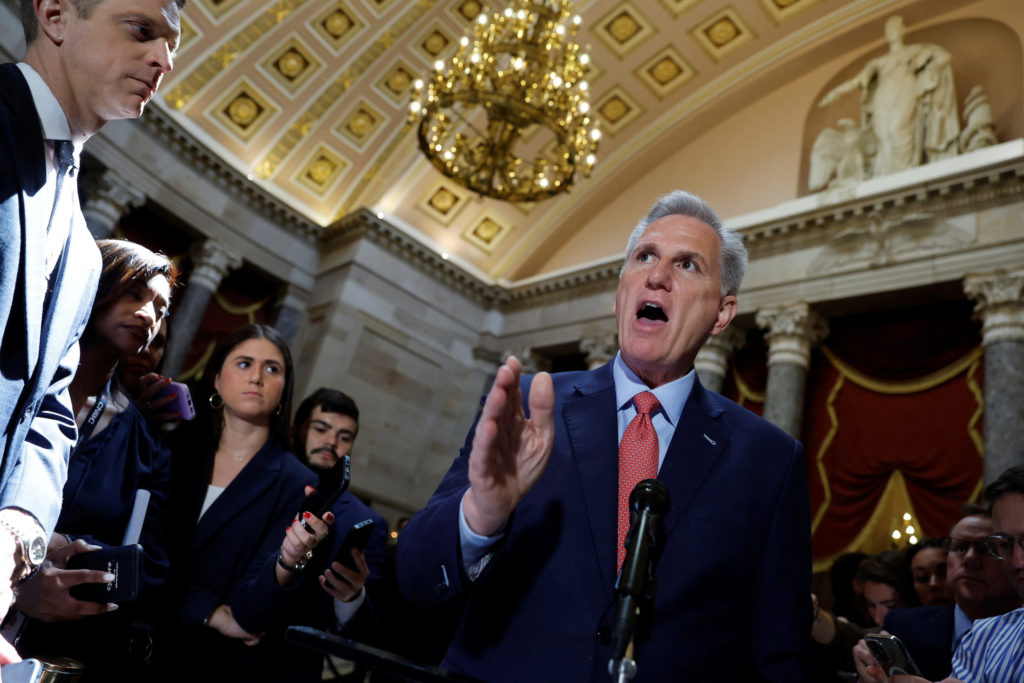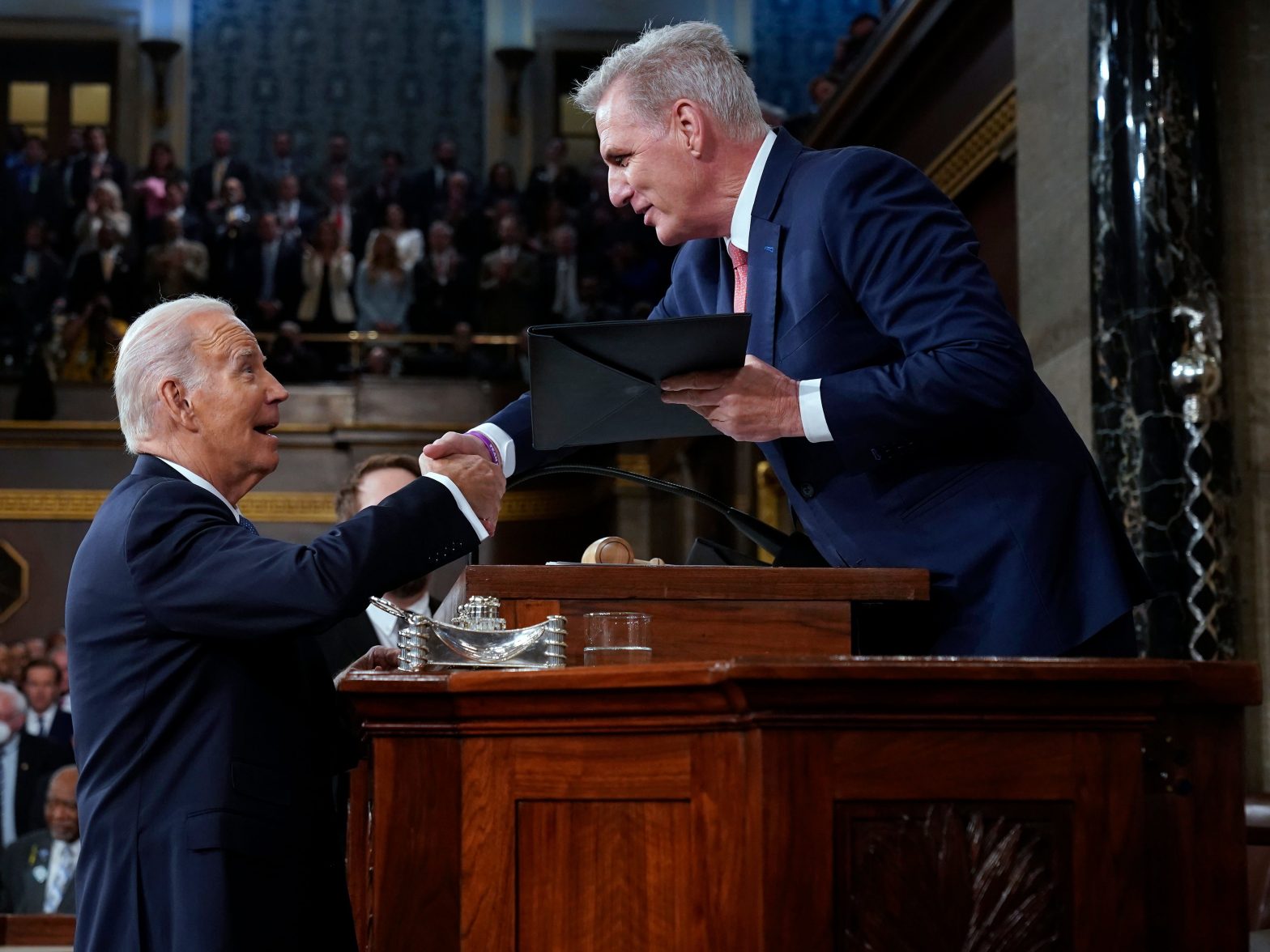Introduction:
After several weeks of intensive discussions, President Joe Biden and the House Republicans have preliminarily agreed upon a plan to tackle the debt limit issue and impose spending restrictions. The proposed deal provides some temporary relief, but the journey ahead is fraught with difficulties, with party leaders striving to secure support from their respective members who have differing opinions on the deal’s components. The bill text was unveiled on Sunday night, leading to a rush by both parties to spin the agreement in favor of their own goals. The subsequent sections present a detailed analysis of the deal’s main elements and their likely repercussions.

Handling the Debt Ceiling:
The proposed deal suggests suspending the debt limit until the beginning of 2025. By putting aside the debt ceiling as a potential point of contention during the 2024 presidential election, the agreement strives to ensure financial stability and prevent potential legislative deadlock linked to the country’s borrowing ability.
Non-Defense Spending Limits:

The deal proposes that non-defense spending should essentially remain steady in the fiscal year 2024, with a projected 1% rise for fiscal year 2025, subject to certain appropriations modifications. Notably, these modifications involve shifting $20 billion in IRS funding to non-defense sectors and rolling back $30 billion in unspent Covid-19 relief funding. No budget limitations would be imposed after fiscal year 2025.
Healthcare and Support for Veterans:
The deal prioritizes the full financing of veterans’ healthcare, ensuring continuous assistance for those who served the nation. Also, the agreement suggests boosting the PACT Act’s toxic exposure fund by nearly $15 billion in fiscal year 2024. The emphasis on veterans’ healthcare underscores a mutual dedication to providing all-round support for those who have made sacrifices for the country.
Extension of Work Requirements for Food Stamp Beneficiaries:
A prominent part of the agreement is the short-term extension of work requirements for certain adults benefiting from food stamps. Current regulations restrict childless, able-bodied adults between 18 to 49 years from receiving food stamps for more than three months every three years unless they meet specific employment criteria. The deal aims to gradually increase the upper limit of the requirement to 55 years. However, exemptions would be broadened for veterans, homeless individuals, and former foster youth registered in the SNAP program. It’s important to note that all changes related to work requirements would expire in 2030.
Rolling Back Unspent Covid-19 Relief Funds:
The deal includes a clause that retracts about $30 billion in unspent funds from earlier Covid-19 relief packages. However, the agreement maintains $5 billion for accelerating the production of Covid-19 vaccines and therapies, along with ongoing funding for housing aid, the Indian Health Service, and other vital programs. This part of the agreement demonstrates efforts to reconcile fiscal responsibility with the need to maintain crucial pandemic response measures.
Repercussions for Student Loan Payments:
The agreement contains a clause that would reinstate the obligation for borrowers to resume student loan repayments at the summer’s end. This follows the temporary halt on repayments imposed during the Covid-19 pandemic. Additionally, the deal supports President Biden’s proposal to provide up to $20,000 in debt relief for eligible borrowers, a measure currently pending before the Supreme Court. The agreement also upholds the continuation of Biden’s income-driven repayment scheme.
Climate and Clean Energy Provisions:

Significantly, the agreement does not recommend any modifications to the Inflation Reduction Act’s clean energy provisions. This section preserves the climate-focused tax credits and subsidies included in the legislation, despite attempts by House Republicans to revoke them. Moreover, the agreement introduces measures within the National Environmental Policy Act to improve coordination and efficiency in federal agency decision-making processes tied to environmental reviews.
Fast-Tracked Pipeline Construction in West Virginia:
A contentious aspect of the agreement involves the accelerated construction of the Mountain Valley Pipeline, a natural gas pipeline project in West Virginia. This provision has attracted scrutiny due to concerns over its potential environmental impact and the effects on local communities.
Conclusion:
The cross-party agreement reached on the debt limit and spending holds considerable implications across multiple policy domains. While managing the debt ceiling imparts stability, the agreement’s provisions concerning non-defense spending, work requirements, and rolling back Covid-19 relief funds have ignited debates and created divisions among lawmakers. As Congress proceeds, the challenge is to secure enough support to transform this agreement into legislation. The resulting decision will mould the country’s financial framework and affect vital areas like veterans’ care, social aid programs, and environmental policies.
©world-news.biz
